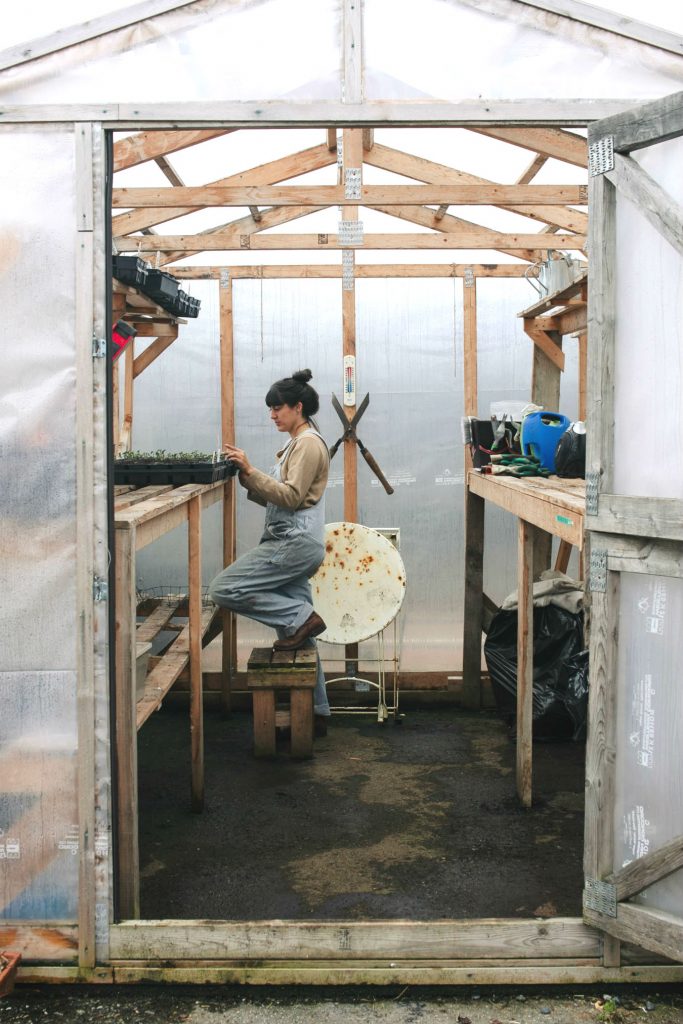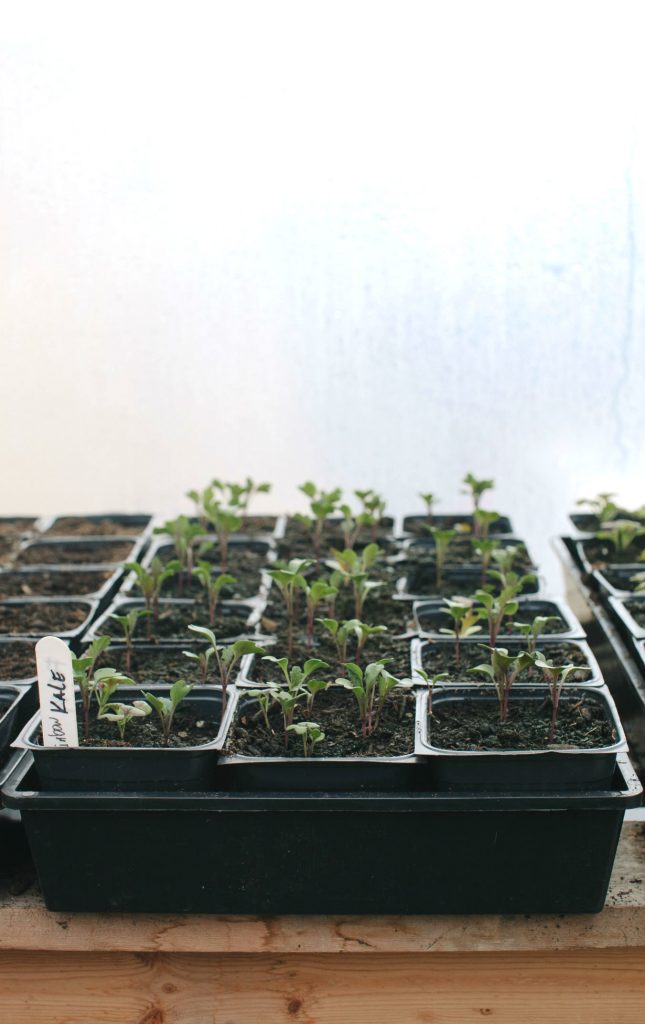The Pacific Northwest in the early spring is foggy—monochromatic in some coastal areas, and lush and woodsy with conifers, mushrooms, and ferns in others. It is rainy more often than not, and vegetable gardeners have rigged up various cloche structures to protect their crops. Kale, chard, and other overwintered vegetables in blue-green tones stand tall in veggie plots. Anticipation of the growing season ahead hangs in the dewy air, and this is the time of year to bundle up in raingear, tend to precious seedlings, and ensure a fruitful harvest to come.
As you begin to plan your gardens, prep your soil, and sow the earliest seeds, take the time to appreciate the first signs of spring. With an acutely-timed garden, you can harvest 365 days a year. One of the first emerging signs of growth in spring is the garlic shoot. Plant garlic in the fall, between the end of September and the end of October, mulch the soil with hay and leaves to insulate it, and leave the cloves to their own devices to set root in the winter months. The moment the soil temperatures rise, the bulbs emerge. Garlic grows so beautifully in Vancouver and the surrounding regions, so one can’t help but wonder why we import so much of it. There is nothing more satisfying than mincing a clove from the garden and taking in the aroma. Growing garlic is a satisfying exercise in self-sufficiency, too. If you grow enough, it can last into your next harvest. Trimming the roots, scraping away excess dirt, and hanging bulbs in bunches to dry for several weeks in a cool, dry, and airy place will allow you to store garlic until the next new crop. Eating a few fresh bulbs while curing the rest allows for instant gratification, too.
In April, you will begin to see new growth everywhere, and there are several delicacies to look forward to: chervil, kale tips, purple sprouting broccoli, mustard greens, purslane, and sorrel, to name a few. Kale tips are the flower stalks of kale that have been left to overwinter in the garden and endure the months of endless rain in the region. Purslane is a wild and prolific creeping plant with grassy flavour—add it as a garnish to spring salads. Chervil is one of the quintessential fines herbs. This delicate, lacy, mild, and licorice-hinted ingredient has a surprising ability to withstand the winter. Keep yours covered under a cloche, a welcome addition to the kitchen.
Soon, the seedlings of sweet peas, kale, mustards, and onions will become ready for transplanting from the greenhouse to the garden. May the days get longer and our hands get dirty.
Samantha Philips is one third of the trifecta of inspired women behind Victory Gardens. Check back every Friday in April for more insights on spring gardening.
Read more about Vancouver’s urban farms.
Read more from the spring gardens series.
Photos: Jourdan Tymkow










